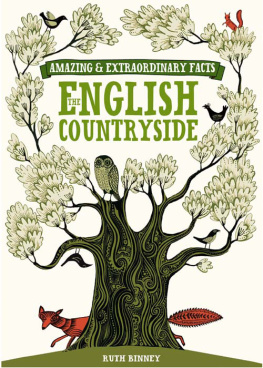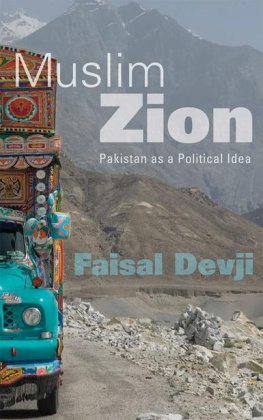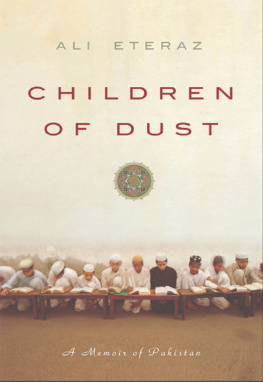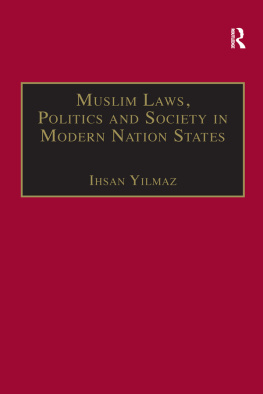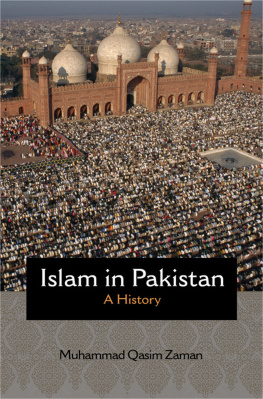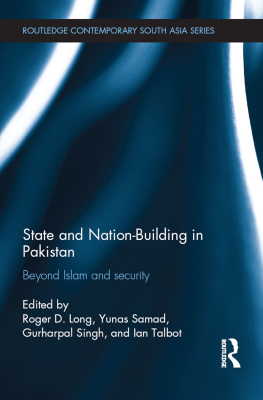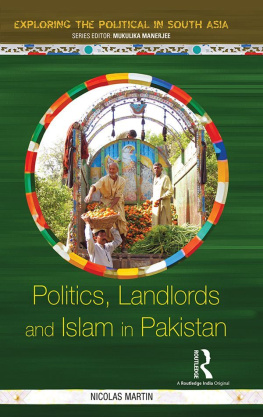Landlord Power and Rural Indebtedness in Colonial Sind
18651901
Centre of South Asian Studies,
School of Oriental and African Studies,
University of London
LONDON STUDIES ON SOUTH ASIA
10. John Bullions Empire
G. Balachandran
11. Landlord Power and Rural Indebtedness in Colonial Sind
David Cheesman
Landlord Power and Rural Indebtedness in Colonial Sind
18651901
David Cheesman
First published in 1997
by Curzon Press
Published 2013 by Routledge
2 Park Square, Milton Park, Abingdon, Oxon OX14 4RN
711 Third Avenue, New York, NY, 10017, USA
Routledge is an imprint of the Taylor & Francis Group, an informa business
1997 David Cheesman
Typeset in Plantin by LaserScript, Mitcham, Surrey
All rights reserved. No part of this book may be reprinted or reproduced or utilised in any form or by any electronic, mechanical, or other means, now known or hereafter invented, including photocopying and recording, or in any information storage or retrieval system, without permission in writing from the publishers.
British Library Cataloguing in Publication Data
A catalogue record for this book is available from the British Library
Library of Congress in Publication Data
A catalogue record for this book has been requested
ISBN 13: 978-0-700-70470-5 (hbk)
To
Nazia
Contents
Population of Sind, 18721911
Muslim communities in Sind, 18811911
Crop production in Sind, 1871/721900/01
Examples of crop division in Sind
Landholdings in the Jamrao Tract, 19031904
Largeholders in Sind around the turn of the century
Largeholders in taluqa Larkana, 1869/701891/92
Largeholders in taluqa Sukkur, 1889/901897/98
Muslim and Hindu largeholders in Sind around the turn of the century
Largeholders in taluqa Mirpur Sakro, 1889/901902/03
Largeholders in taluqa Sujawal, 1883/841913/14
Incomes of two peasant families in taluqa Sukkur, 1873
Landholdings in Sind, 1800/811894/95
Landholdings in Larkana, 18701892
Debtors accounts
Debt in Sind, 1876
Position of Sind
Administrative divisions of Sind
Physiographic divisions of Sind
Profile of Indus river
Principal canals in Sind, 1907
Principal towns in Sind, and railways, 1876
Largeholders in taluqa Nasirabad, 1895/96
This book is based on my University of London PhD thesis. I should like to thank my Supervisor, Dr Z.H. Zaidi, for inspiring me to take up the topic in the first place, and then for encouraging me during the research; Professor Kenneth Ballhatchet, Dr Peter Hardy and John Harrison for the advice they have given me over the years; and to my examiners, Dr Percival Spear and Dr David Taylor, for encouraging me to publish the thesis. Much of my research was carried out at the India Office Library and Records (now the Oriental and India Office Collections of the British Library). It is a pleasure to pay tribute to the efficient and courteous service provided by the staff there and to the friendly atmosphere which has made the Library not merely a place of work, but almost a second home for many students of Indian history.
Innumerable Pakistanis showed me kindness and generosity during a years study leave in Sind. I am particularly grateful for the hospitality extended to me by Behram Rustomji and his family, Ghulam Rabbani Aggro, Jam Sadiq Ali, Mir Mohammad Bux Khan Talpur and his sons, Mir Ahmed Khan Talpur and Mir Ali Ahmed Khan Talpur. I would also like to thank Dr M.H. Rizvi, Moinuddin Khan, Safdar Mehdi, Dr Hamida Khuhro, Sayad Pir Bakhsh, Rukundin, Dr G.A. Allana, Pyarali Allana, P.K. Shahani, Mustafa Hussain Lahori and all the staff at the Commissioners Record Office, Karachi, especially Ghulam Hussain.
Finally, I should like to thank the Economic and Social Research Council, who financed my research. It would have been impossible to undertake the project without their backing.
Afrinama | Letter of recommendation given by a government official in recognition of services rendered. |
Akhund | Teacher. |
Amil | Revenue officer; used in Sind to signify a non-bania, upper class Hindu. |
Autaq | Guest house. |
Bajri | Spiked millet. |
Bania | Hindu trader. |
Barani land | Land watered by rainfall. |
Batai | Division of the crop at harvest time. |
Bigah | A measure of land (2,500 square yards in Sind). |
Bund | Earthen embankment or dyke. |
Charkhi land | See lift land. |
Darbar | Public audience given by senior person to invited notables. |
Deh | Village. |
Faqir | Religious mendicant. |
Flow land | Land watered by overflow from a canal. |
Hakabo | Water rate. |
Hari | Ploughman, landless labourer. |
Hurlo | Area irrigated by a Persian wheel. |
Izzat | Status, prestige. |
Jagir | Land given free of government assessment. |
Jirga | Council of elders of a Baluch or Pathan tribe. |
Juari | Great millet. |
Jungle | Scrub, wild plants. |
Kacho land | Land newly created by the river, which is submerged at each inundation. |
Kalar | Salt-impregnated land. |
Karia | Water-course. |
Kasa | One sixtieth of a kharar. |
Kharar | Twenty-nine and a half bushels; equivalent to twenty maunds of paddy or twenty-four maunds of juari, bajri or husked rice. |
Kharif | Hot-weather cultivating season (May or June to October). |
Khaskheli | Hereditary servant. |
Lakh | One hundred thousand. |
Lapo | A zamindari fee. |
Lift land | Land watered by means of a Persian wheel. |
Lungi | Piece of decorated cloth, worn as a scarf in Sind. |
Maund | Forty sers (eighty-two and two-seventh pounds). |
Mir | High ranking Muslim chief. |
Moki land | See flow land. |
Mukhtiarkar | Government official responsible for a taluqa. |
Munshi | Subordinate officer of a Mukhtiarkar. |
Murid | Disciple. |
Nar | See Persian wheel. |
|


